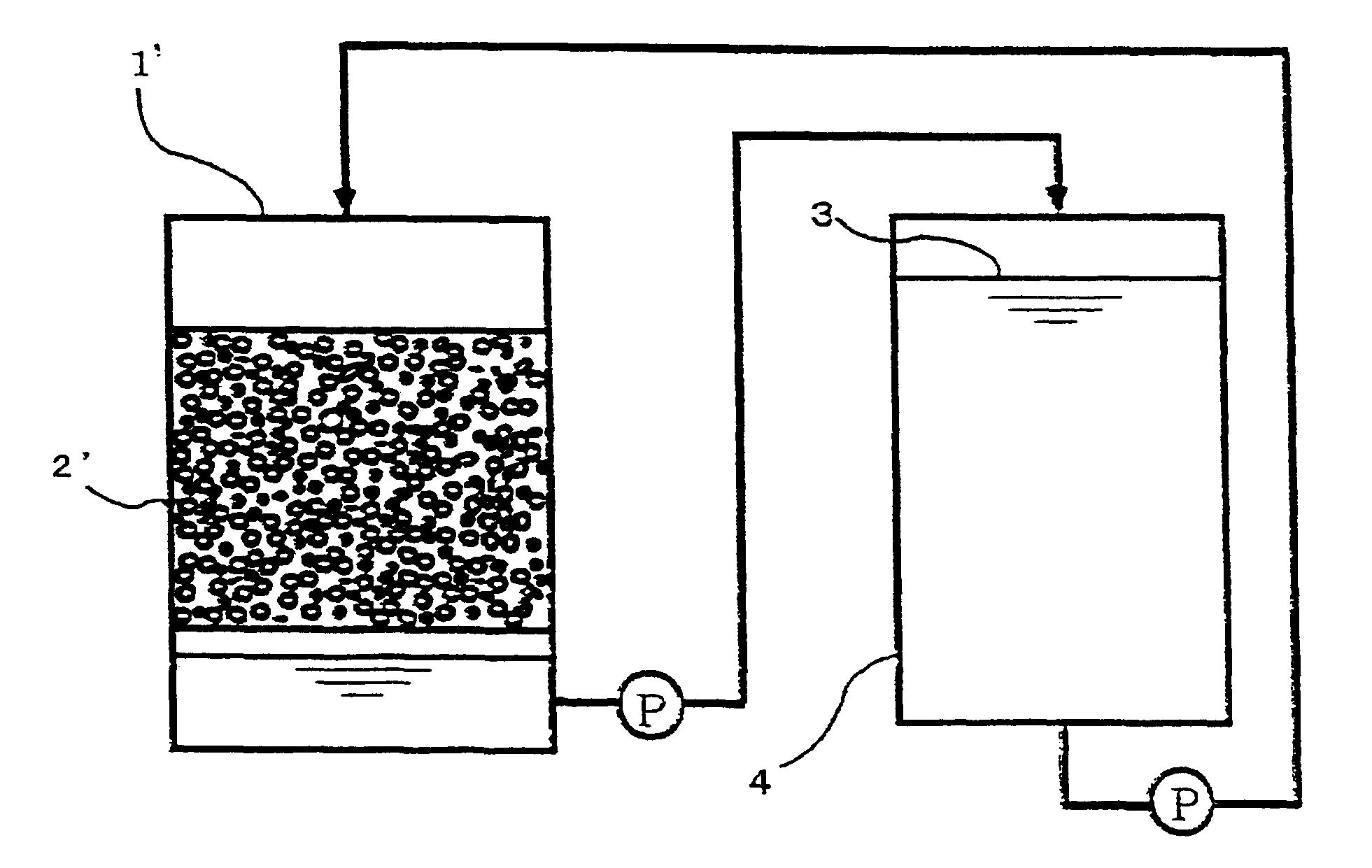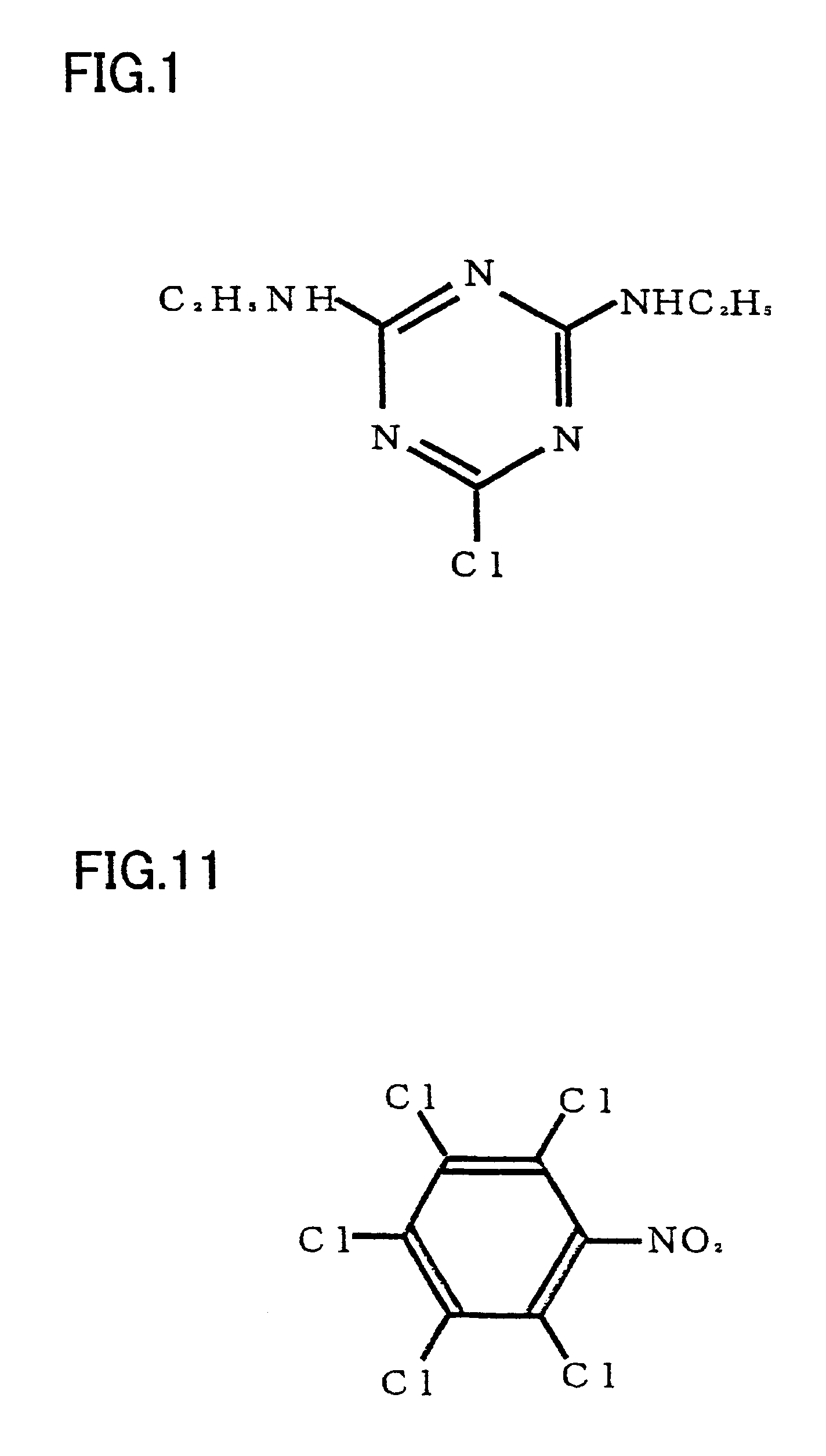Restoring soil and preventing contamination of ground water
- Summary
- Abstract
- Description
- Claims
- Application Information
AI Technical Summary
Benefits of technology
Problems solved by technology
Method used
Image
Examples
first example
Accumulation of decomposing microorganisms that decompose simazine by the improved soil perfusion method proposed by the inventors of the present invention was performed under the conditions shown in Table 1 below.
In addition, artificial microhabitats A through C having the physical properties respectively shown in FIG. 2 were used for the porous materials used during accumulation (hereinafter, to be referred to as artificial microhabitats). Artificial microhabitats A through C in FIG. 2 indicate the artificial microhabitats shown in Table 2 below.
The decomposing microorganisms that decompose simazine in the first example were first accumulated from the test soil for accumulation in artificial microhabitat B in the manner described below. As shown in FIG. 3, an accumulation soil layer 2 was formed in a soil layer tank 1 having a capacity of 500 ml. This accumulation soil layer 2 was formed by mixing 2 g of artificial microhabitat B fragmented into pieces measuring 5 to 10 mm into 40...
second example
The procedures for accumulation and isolation of quintozene along with the formation of retentive carriers accumulated with quintozene-decomposing microorganisms were performed using the same procedures as those explained for simazine in the first example. In other words, since quintozene can be used in place of simazine in the explanation of the first example, a detailed explanation is omitted here. However, contaminated soil for decomposition of quintozene was sampled from the same golf course as in the case of simazine and used as the test soil, and prepared by adding quintozene to a concentration of 10 mg / kg d.s. In addition, the perfusion liquid used had a quintozene concentration of 0.5 mg / l.
FIGS. 12 and 13 show the results of decomposition testing in which the decomposition status of quintozene was observed. FIG. 12 indicates the case of using artificial microhabitat A for the retentive carrier accumulated with quintozene-decomposing microorganisms, while FIG. 13 indicates th...
PUM
 Login to View More
Login to View More Abstract
Description
Claims
Application Information
 Login to View More
Login to View More - R&D
- Intellectual Property
- Life Sciences
- Materials
- Tech Scout
- Unparalleled Data Quality
- Higher Quality Content
- 60% Fewer Hallucinations
Browse by: Latest US Patents, China's latest patents, Technical Efficacy Thesaurus, Application Domain, Technology Topic, Popular Technical Reports.
© 2025 PatSnap. All rights reserved.Legal|Privacy policy|Modern Slavery Act Transparency Statement|Sitemap|About US| Contact US: help@patsnap.com



